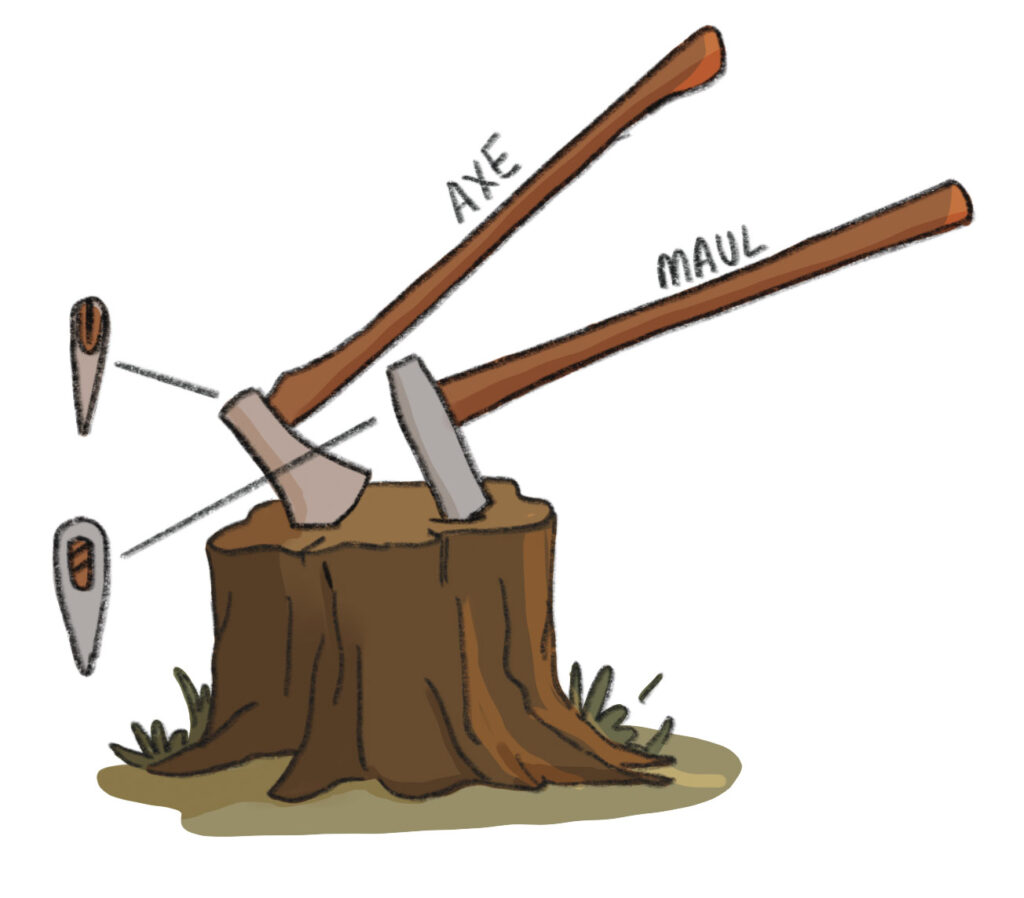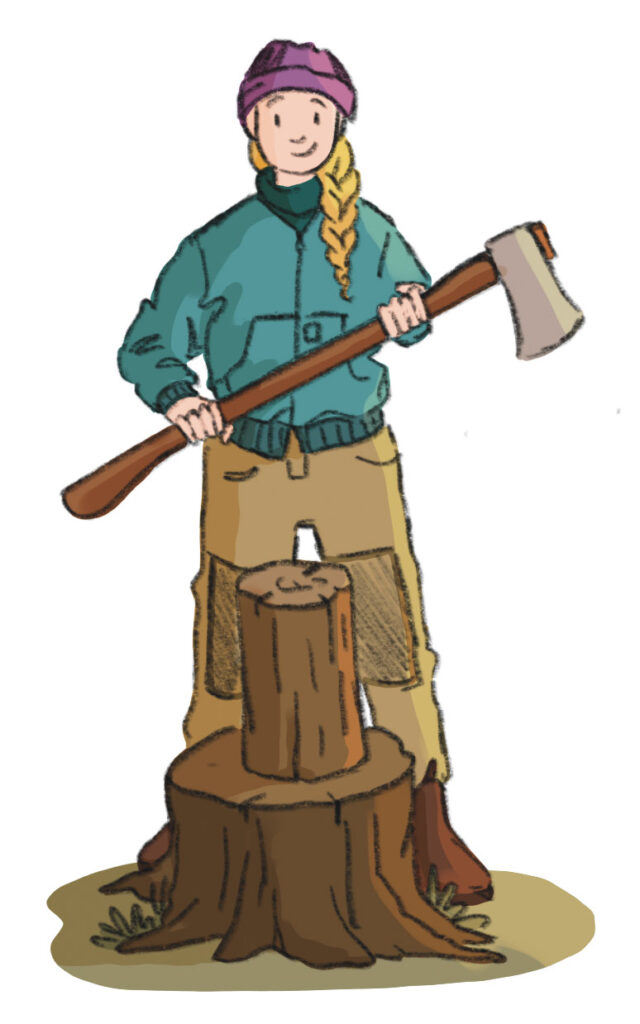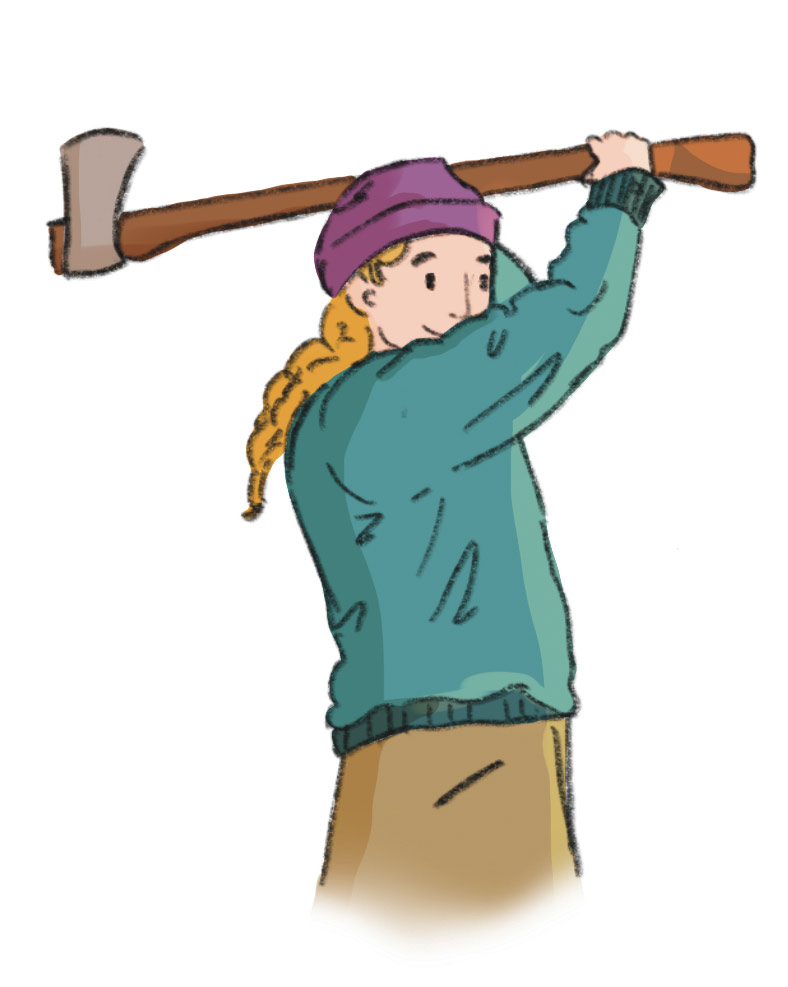By Katy Kelleher
Illustrations by Kelsey Grass
From our January 2023 issue

1. Prep Properly
Wetherbee prefers a splitting maul to an axe, on account of its heavier, less tapered head — it’s less likely to get stuck in knotty wood, she says. Also: a chopping block, and she recommends eye protection and logging boots. “The maul may not hit your foot,” Wetherbee says, “but it really hurts when you split a piece and it ricochets.” Set your block on a flat surface at a comfortable height, in an area without overhanging branches or clotheslines, and steer clear of dogs and kids.
2. Consider the Log
Take a look at the log you’re out to split before setting it on your chopping block. “If the logs are seasoned, you can often find a split or a crack,” Wetherbee says — and that’s where you want to take aim. Also, note any knots and knobs and avoid them.


3. Square Off
Stand with your shoulders square to the chopping block, feet spread shoulder-distance apart, hips and knees facing forward. Despite what you see in the movies, no twisting motions or over-the-shoulder action is necessary here. “No need to do a wild windup for it,” Wetherbee explains. “You’ll miss your mark if you do.”
4. Raise ’Em Right
Grip the maul with your dominant hand higher on the handle, a little below the head, and your non-dominant hand below, at the handle’s end. Raise it straight back overhead.


5. Chop, Chop
Bring the maul down hard, in a straight line, your higher hand sliding down to meet the other as you swing. If your log doesn’t split, remove the maul and hit it again (with slimmer heads, axes can be harder to wiggle free). Most importantly, Wetherbee says, enjoy the work, as the effort that goes into hauling, splitting, and stacking is its own reward. “By the time you have a fire, you’ll recognize every piece of wood,” she says. “I can’t think of anything more satisfying than that.”
Read Everything You’ve Always Wanted to Know About Heating With Wood for more woodstove tips.




